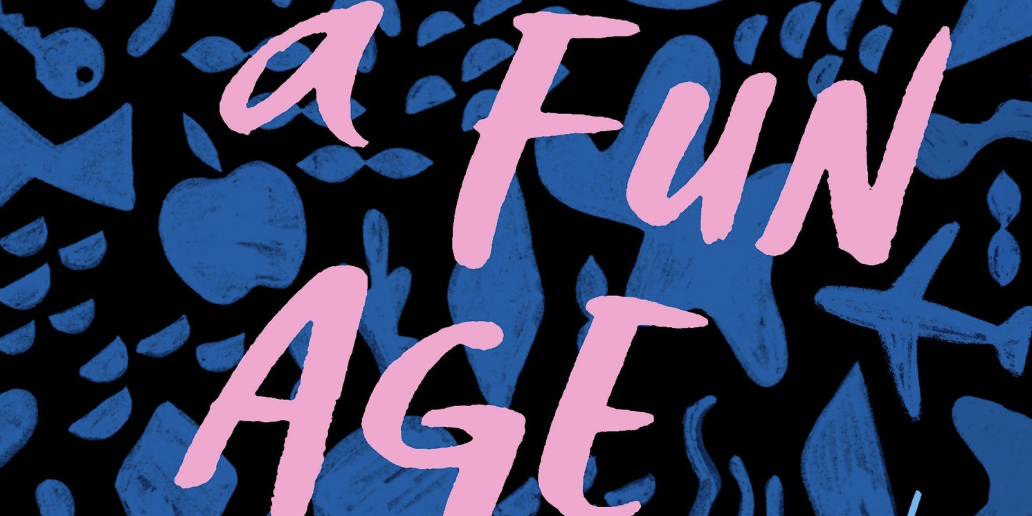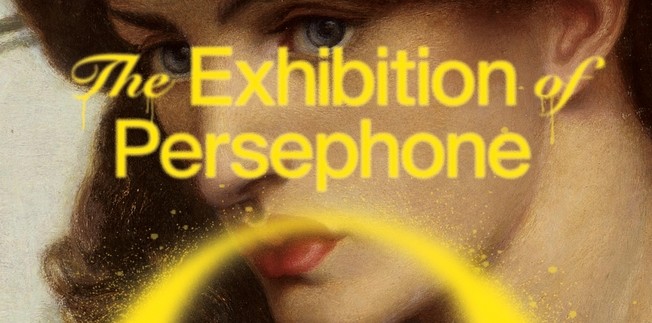We often look to novelists to encapsulate a moment, era, or generation. Earlier in the 2010s, Chimamanda Ngozi Adichie’s Americanah (2013) captured our anxious new millennium and offered wisdom on race, colonialism, capitalism, and immigration. Her literary success gave way to TED Talks, widespread interviews, and a MacArthur Fellowship, among other honors. Despite the breadth of Adichie’s texts, what she became most sought after to comment upon—the lens through which her work was evaluated—was identity.
- print • Feb/Mar 2020
- print • Feb/Mar 2020
“I do not believe in serendipity,” says Percy, the narrator of Jessi Jezewska Stevens’s The Exhibition of Persephone Q. “I don’t think there are moments, of which so many people speak, in which a life irrevocably and neatly forks, like a line in your palm. I believe instead that the past returns to you in waves, crashing onto the shore, so that the ground on which you stand is always shifting, like a beach, imperceptibly renewed.” I found myself returning to this passage throughout my reading, and for some days afterward, trying to decide whether I believed it, either as
- print • Feb/Mar 2020
In her essay “Something Has Brought Me Here,” Amina Cain, the author of two story collections and now the novel Indelicacy, speaks of her preoccupation with the affinities between landscape painting and literature. “Whenever I read a novel,” she begins, “narrative has been impressing itself more and more visually in my mind. Or maybe it’s that my mind has gone more and more toward these fictional visions. Even though I’m a writer, it’s not always language I’m drawn to.” In an interview with fellow writer Renee Gladman, Cain presents her fixation as a question: “Can a story be like a
- print • Feb/Mar 2020
No one could decide how to kill Helen of Troy. It’s a glaring oversight for such a crucial character. Greek tragedy is a genre that usually relishes any opportunity for a specific and harrowing death, especially for women—deaths that spill symbolism in shining pools. A woman’s way of dying is the apex of her meaningfulness: Antigone hanging herself in captivity, Clytemnestra stabbed by her own son, Polyxena sacrificed on the tomb of Achilles. It is strange, then, that Helen ends up without an ending. Not least because, according to the logic of the form, she should be the object of
- print • Feb/Mar 2020
Lately I’ve been feeling differently about birthdays. For a long time I looked forward to them, as we do when we are children. Then I went through a long stage when I dreaded my birthdays because they were little—no, big—reminders of what I’d wanted to do but hadn’t yet done, or had missed the chance to do altogether. Then I entered the birthdays of my late forties and early fifties (I’ll be fifty-three in May), when I actually started to feel, well, old. Death approaching, all that.
- print • Feb/Mar 2020
The title of Garth Greenwell’s new novel appears exactly once in the book, close to its midpoint, in the second of its three sections, as the narrator describes a relationship that has introduced him to the heretofore alien qualities of stability and happiness. The unnamed protagonist, who was also the central figure in Greenwell’s 2016 debut, What Belongs to You, is an American living in the Bulgarian capital of Sofia, where he teaches at a prestigious high school. What Belongs to You, and other chapters of this new book, Cleanness, contain vivid accounts of the teacher’s sexual habits and appetites,
- print • Feb/Mar 2020
We name things to make them less fearful. It’s an expression of affection or conquest (isn’t that why Adam christened the animals?). I think of how my kids sometimes bark out “Alexa, play Mamma Mia!” even though we don’t own an Amazon device. I’ll never buy one of those things, but my resistance is futile: My children already inhabit a reality in which they’re on a first-name basis with the internet. It’s like no one remembers HAL!
- print • Feb/Mar 2020
Jenny Offill’s first novel, Last Things, was narrated by an eight-year-old girl named Grace. Grace’s mother, Anna, starts out a little crazy, the kind of intellectual eccentric whose home-school curriculum consists of a room painted black and a “cosmic calendar” marking out the origins of life, and then she gets a lot crazy—driving naked, insisting on picnicking inside a burned-down restaurant, that kind of thing. On Anna’s thirty-fifth birthday, mother and daughter bury a time capsule filled with photographs. “The box was made out of a special kind of metal that could survive any kind of disaster known to man,”
- print • Dec/Jan 2020
“Certain absences are so stressed, so ornate, so planned, they call attention to themselves; arrest us with intentionality and purpose”—so said a tenebrous Toni Morrison in a 1988 speech at the University of Michigan. It was a canny, candid pronouncement: Morrison had registered a horripilating chill in the body of American literature, the presence of a ghost passing through—that of the Afro-American. A muted, neglected specter, she said, it stalked the canon in a close orbit, reputed not to exist. Her genius was to listen for it, to log the whispers of its alternate and unsanctioned histories. What she heard
- print • Dec/Jan 2020
“These things happened, but not as described.” So begins The Baudelaire Fractal, the vertiginous debut novel by poet, translator, essayist, and most genteel of insurgents Lisa Robertson. Like her previous books, her latest is a work of buoyant loveliness and muscular erudition, a lush thicket of thoughts that here enrich the ease and breeziness of personal narrative with the chewier textures of history, criticism, and literary theory. “Writing unfolds like a game called ‘I,’” declares the novel’s diaphanous narrator, behind whom Robertson herself lurks, and to whom she gives the name—the I color—Hazel Brown. Lovingly sported by Robertson like a
- print • Dec/Jan 2020
Octogenarian, slight, and frizzy-haired, Sonallah Ibrahim is a bit of a grump. For over five decades, the Egyptian novelist has served as the Arab world’s preeminent bard of dashed hope and disillusionment. His oracular if gloom-filled books are blinding inventories of consumerism, degradation, dictatorship, stagnation, pleasureless sex, creeping Islamism, and mind-numbing Americanization. To be alive and conscious, suggests Ibrahim, is to be humiliated. He lives in Cairo, the city of his birth and the mother of endless annoyance. “I’m so irritated most of the time by the dirt, the noise, and the commotion, but nevertheless I find that I can’t
- print • Dec/Jan 2020
In 2008, Gary Lutz gave a lecture called “The Sentence Is a Lonely Place,” a transcript of which was later published in The Believer. The lecture outlined Lutz’s approach to short stories, specifically his punctilious focus on the sonic qualities of the sentence. He spoke in favor of “steep verbal topography, narratives in which the sentence is a complete, portable solitude, a minute immediacy of consummated language—the sort of sentence that, even when liberated from its receiving context, impresses itself upon the eye and the ear as a totality, an omnitude, unto itself.” Interest in The Complete Gary Lutz, a
- review • November 21, 2019
Here in the United States, we are quite obsessed with stuff. We buy new cars, weighted blankets, statement sneakers, the latest iPhone. Amazon Prime delivers 1.5 million packages per day in New York alone. The things we own have become part of our identity, marking not only our tastes and values, but our sophistication and class aspirations. But imagine what would happen if, one by one, those items began to disappear, not just from our physical lives but from our collective consciousness as well. Who exactly are we without our things and the memories that come with them?
- print • Dec/Jan 2020
I missed Guillaume Nicloux’s film The Kidnapping of Michel Houellebecq on its release in 2014. What a mistake—it’s a real hoot! Nicloux’s deadpan mock thriller tacks from a rumor that the author had been kidnapped “by Al-Qaeda (or aliens)” during the book tour for his 2010 novel The Map and the Territory. (I watched it on Google Play, which mislabels it a “documentary”—much of it does seem to be improvised, and Houellebecq does seem to be speaking as himself, but credit Nicloux for the devious scenario and execution.) We see Houellebecq’s routine—smoking on the street and bumping into friends, smoking
- review • November 12, 2019
At the beginning of Lara Williams’s Supper Club, we find the narrator Roberta stuck in a typical millennial holding pattern. As she enters her late twenties, Roberta is working an uninspiring assistant job. She spends her free time cooking a lot, socializing very little, and dating never. Flashbacks to Roberta’s college days present her as similarly meek—she rarely ventures off-campus, feels bored by her major, and wonders how to interact with her roommates. Then as now, she makes little effort to shift her circumstances.
- review • October 17, 2019
Of the emotional afflictions we witness in those around us, obsession may be the most discomfiting. It’s also the most gendered: We’re conditioned to find it appealing, flattering when a man is the obsessed—Calvin Klein’s women’s fragrance “Obsession,” is, I assume, designed to elicit obsession from males who pass within smelling range of the female wearer, after all. But an obsessed woman? It’s likely people find her pathetic. In the case of Adam Foulds’s recent novel Dream Sequence, we see obsession engulf Kristin, a lonely divorcée who spends her time holed up in her TV room watching The Grange.
- review • October 15, 2019
Early in Middlemarch, George Eliot’s young heroine finds herself alone on her honeymoon, bewildered by her disappointment in her new marriage. After describing Dorothea’s desolation, the narrator addresses the reader directly:
- review • October 8, 2019
History, Tolstoy insisted, is not driven by great men—the Bismarcks, the Napoleons of this world. It is constructed from an endless number of minute details, like drops of water, or grains of sand.
- print • Sept/Oct/Nov 2019
The erstwhile wunderkind has been coping with the onset of middle age for four books now. The novels NW (2012) and Swing Time (2016) were about the ways youth slips away, among other things: friendship, neighborhood loyalties, class, celebrity, violence, inequality, biracial identity, sex, the internet, Africa, England, and how to write a novel when realism is anxious about its own survival. The essays in Feel Free (2018) and now the stories in Grand Union have taken in parenthood, the passing of the older generation, unexpected political upheavals, unwelcome physical transformations, and the arrival of a strange species: people in
- print • Sept/Oct/Nov 2019
At the midpoint of D. H. Lawrence’s Women in Love occurs one of the really extraordinary hidden scenes in English literature. Ursula and Gudrun are the young protagonists, figuring out their ambitions, their loves, and their futures. They are walking to a neighborhood water-party, with their father and mother in front of them, when suddenly they burst out in mockery. “‘Look at the young couple in front,’ said Gudrun calmly. . . . The two girls stood in the road and laughed till the tears ran down their faces, as they caught sight again of the shy, unworldly couple of



















